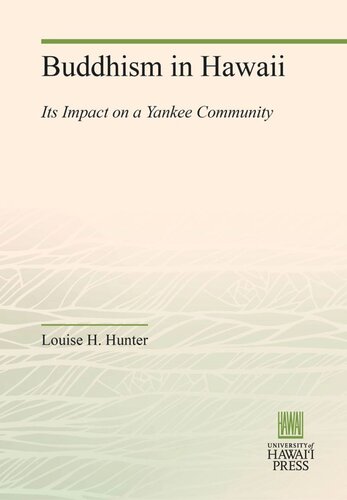

Most ebook files are in PDF format, so you can easily read them using various software such as Foxit Reader or directly on the Google Chrome browser.
Some ebook files are released by publishers in other formats such as .awz, .mobi, .epub, .fb2, etc. You may need to install specific software to read these formats on mobile/PC, such as Calibre.
Please read the tutorial at this link: https://ebookbell.com/faq
We offer FREE conversion to the popular formats you request; however, this may take some time. Therefore, right after payment, please email us, and we will try to provide the service as quickly as possible.
For some exceptional file formats or broken links (if any), please refrain from opening any disputes. Instead, email us first, and we will try to assist within a maximum of 6 hours.
EbookBell Team

5.0
110 reviewsIn the two thousand years since its inception, Buddhism has been absorbed and shaped by many cultures of the eastern hemisphere. The peoples of India, Sri Lanka, Myanmar, Thailand, Cambodia, China, Korea, and Japan adapted it to their own societal needs. In Japan, Buddhist beliefs merged harmoniously with those of the Shinto religion, providing the people with a strong nationalistic faith. But in Hawai'i during the half-century following the immigration of thousands of Japanese, the growth of Buddhism met with many new and serious obstacles. With the arrival of the first group of Japanese in Hawai'i in 1868, the leaders of the American Christian community in the islands began preaching against what they believed and feared to be an anti-democratic, anti-American religion. The result was a far-reaching religio-cultural rift between the Japanese Buddhist and American Christian communities.
Buddhism in Hawai'i is, in the author's words, "a chapter in the social history of Hawai'i," the purpose of which is to "uncover and analyze" the Buddhist-Christian conflict and to gauge its effects. Drawing heavily from mass media accounts from the years of the Buddhist controversy, chiefly 1868 through World War II, this study yields an accurate description of the fears, feelings, and prejudices prevalent in both communities. Focusing primarily on the course of Buddhism in Hawai'i, the author deals in depth with the many problems with which it was confronted. The effects of the efforts of Christian missionaries, the controversy over Buddhist versus Christian schools, the increase in labor problems, the inter-community economic competition, Japan's victory in the Sino-Japanese war, the role of Japan as aggressor in World War II, and finally the effect of statehood, are carefully and objectively studied here. The analysis is concluded with a perceptive look to the future role of Buddhism in Hawaii and to its continued impact on the multiracial community.